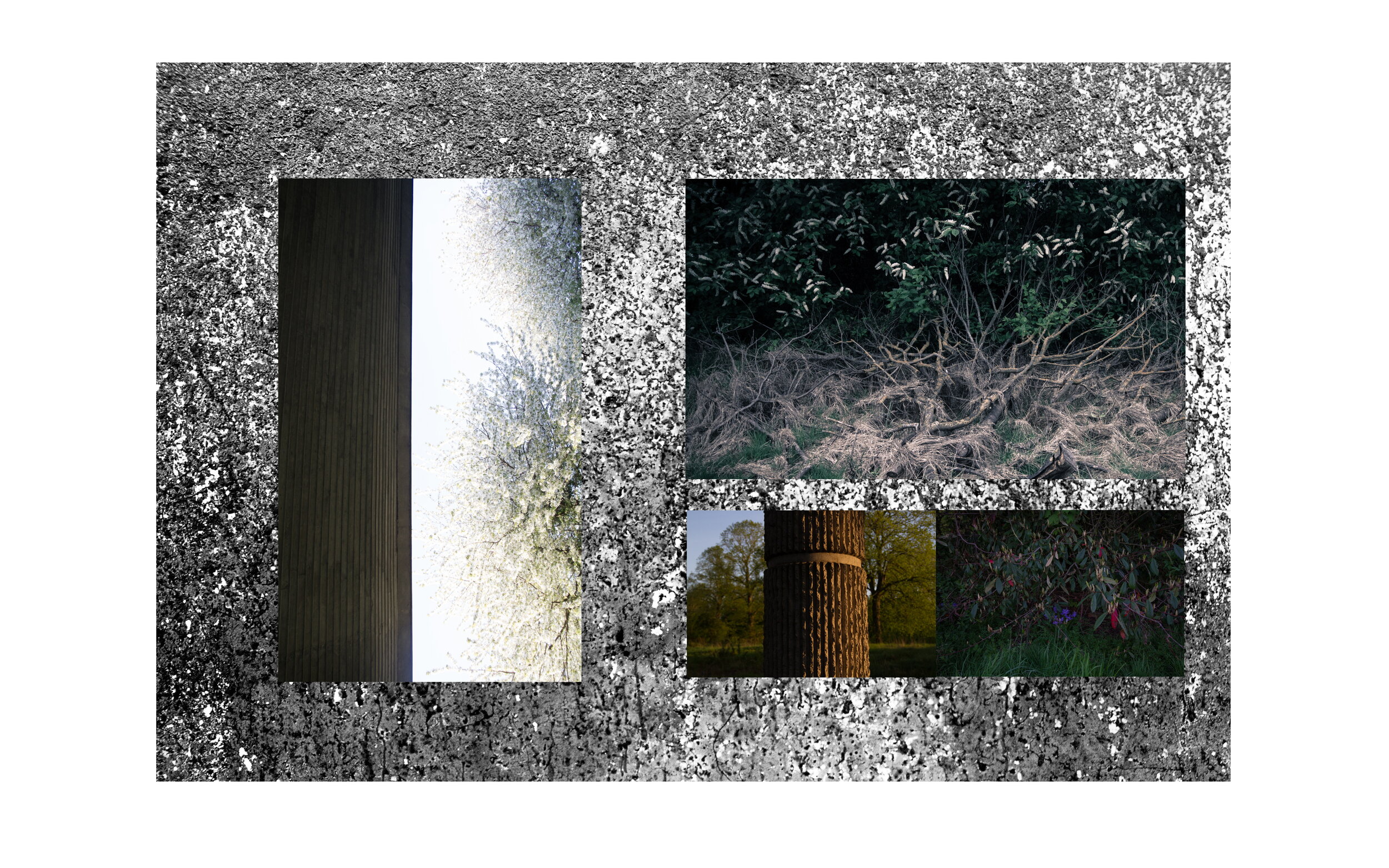In my work, I try to express emotion through my landscape photography, and I bear in mind questions about whether work should have an objective theme, or whether it can be purely personal.
Roundabout is intended to be a visual explanation of my emotional state whilst considering my ongoing frustrations regarding freedom to access green spaces, trespassing and the urban environment, particularly the impact of traffic.
It is a response to a minor car accident, back pain, a difficult relationship, weeks of flu and the anxiety that traps me close to home. The fire that propelled me to travel (or was it escape?) has diminished, quelled by the responsibility I have for my children and my home. It has rooted me to the spot, made me weak and sometimes confines me to my bed. Things scare me. Really scare me.
I have learnt to reliably move my body in beneficial ways. As Lee Hazlewood sang "I've learned to do some simple things. Like lock the door and shut the lights". I wake the kids, clean the kitchen, make some food, shop online. Activities are safe: out with friends, visiting cities, using public transport. The result is that the wildernesses I love are largely out of bounds.I pick up a camera or two and explore close to home, almost a genre of landscape photography itself[1].
I seek out the pockets of green overlooked by industry, where traffic rages metres away or buzzes continuously on the periphery. I try to suspend reality, to enjoy this faint taste of freedom. But the land is spoilt, it's inadequate, damaged and poisoned. It reflects me.I want to stretch my legs, to walk for miles without hitting towns, to hear the silence and feel my heart settle. Is it healthy to live like this? I don't think so.
Installation at De Montfort University
It's been documented that nature is beneficial to those suffering from depression. “Controlling for individual and regional covariates, we found that, on average, individuals have both lower mental distress and higher well-being when living in urban areas with more green space.” [2]
However, a UK study finds differently “after adjustment for confounding by respondent socio-demographic characteristics and urban/rural location, the association was attenuated to the null”.[3] The report goes on to say “While we did not find a statistically significant association between the amount of green space in residents’ local areas and mental wellbeing, further research is needed to understand whether other features of green space, such as accessibility, aesthetics or use, are important for mental wellbeing.” I find this is revealing.
Looking around my mostly urban area, there are city parks, verges and further out, fields and a few country parks (of the pay your parking fee, be gone by dusk variety). I appreciate these but they are structured, small pockets of shared space in which we are ‘allowed’ to visit if we have a car and the fee. In addition to this, many ‘green’ areas are simply there because the land has no value for further development. The term ‘Edgelands’ was conceived in 2002 by Marion Shoard to describe “The interfacial interzone between urban and rural”. It is not necessarily a new concept, as a hundred and fifty years earlier Victor Hugo gloriously declared these areas "bastard countryside...ugly but bizarre, made up of two different natures".
These areas hold an unconventional attraction. This is my environment. The work I’m making is borne of this. My photographs show the damage inherent in these zones but include an element of hope as nature pokes through the poisoned ground. It’s a metaphor for how I feel, how I adapt, how I compromise within my surroundings and yet hope to grow.
Image from East Meet West Publication, 2020
References
1 Irvine, John (2015) A Path Not Far... Landscape Editions Volume One www.kozubooks.com
2 https://www.ncbi.nlm.nih.gov/pubmed/23613211 Psychol Sci. 2013 Jun 24 Would you be happier living in a greener urban area? A fixed-effects analysis of panel data. White MP1, Alcock I, Wheeler BW, Depledge MH.
3 https://www.understandingsociety.ac.uk/research/publications/524371 BMC Public Health, June 1, 2017 A cross-sectional analysis of green space prevalence and mental wellbeing in England Victoria Houlden, Scott Weich and Stephen Jarvis


